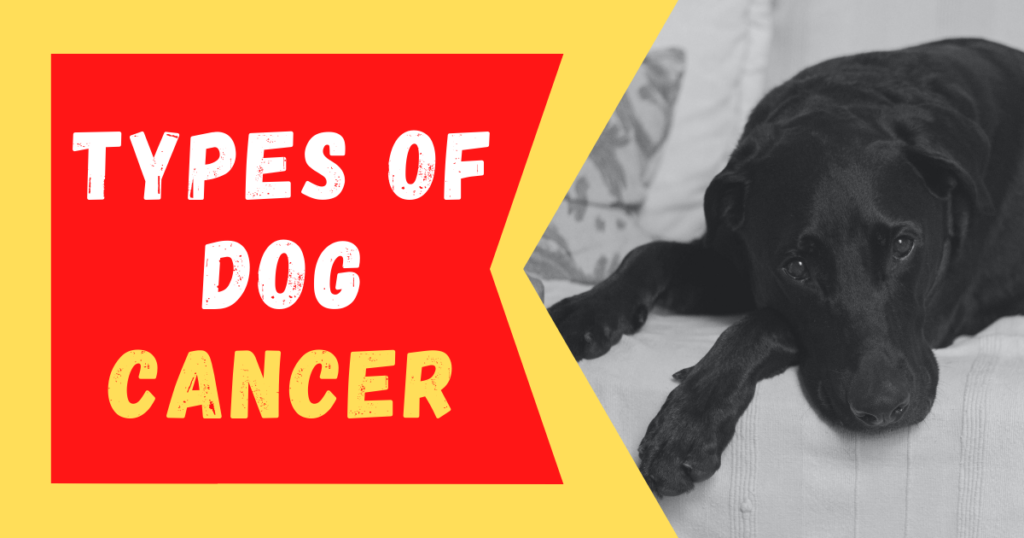Types of Dog Cancer

We’ve seen the signs of canine cancer. Now let’s take a quick look at the different types of canine cancer that are most common.
LYMPHOMA
This type of canine cancer occurs in the lymph nodes or bone marrow and is usually diagnosed in dogs between the ages of 6 and 9. It attacks the dog’s immune system and spreads rapidly if left untreated.
There are five stages of lymphoma in dogs, each with its own treatment options and prognosis. Dog lymphoma usually first appears in the painless but swollen lymph nodes at the back of your dog’s neck or knees.
HÄMANGLOSARCOM
Malignant vascular cancer, hemangiosarcoma, is more common in dogs than in other breeds. It’s most commonly found in the spleen, liver, and heart, but can spread to any organ or appear just under the skin
Unfortunately, there are no clear early warning signs for hemanglosarcoma, and it is often recognized only at an advanced stage. This type of dog cancer occurs most often in large breeds, such as the German Shepherd or Golden Retriever.
MELANOMA
Melanoma is a type of skin cancer that you may have heard of because of its frequency in humans. This most commonly occurs in or around a dog’s mouth or lips. It can also be found on their nail beds, paw pads, and eyes.
Melanoma in dogs can be very aggressive and can spread from the skin deep into the dog’s organs. The earliest signs of melanoma in dogs include swollen feet, dry eyes, or sores in or around the mouth.
BASE CELL TUMOR
Mast cell tumors, found in skin and other tissues such as the airways or intestines, attack the dog’s immune system and usually apply protective enzymes and histamine to dogs.
Fat cell tumors are very common in older dogs. Mixed breeds need to be very vigilant, as do boxers, Boston terriers, beagles, and schnauzers. The earliest sign is usually a skin lesion, often accompanied by excitement from discomfort.
OSTEOSARCOMA
Bone cancer, about 85% of osteosarcoma tumors are malignant and grow very fast. It most commonly occurs in large breed dogs between the ages of 4 and 7
The initial signs are swelling and limping. The most endangered breeds include the Great Danes, Irish Setter, Doberman Pinschers, Rottweilers, German Shepherds, and Golden Retrievers.
MAMMARIA CANCER
Breast cancer most often occurs in bitches who haven’t been sterilized or castrated until they are 2 years old. About 50% of dog breast tumors are malignant and have spread (spread) during surgical removal.
It’s hard to spot because breast tumors usually only appear as a small lump on or around a dog’s nipple.
Watch out for signs of this cancer in dogs. If you see one or more signs, you should contact your vet immediately. The cure rate has never been better and even more so with early detection.
Best wishes to you and your pup and don’t forget to describe them or share them so you can help other dog parents understand the warning signs of canine cancer!
Thank you for continue reading please don’t forget to share this article with your friends.
Sponsored
Share
[Sassy_Social_Share]
Sponsored






